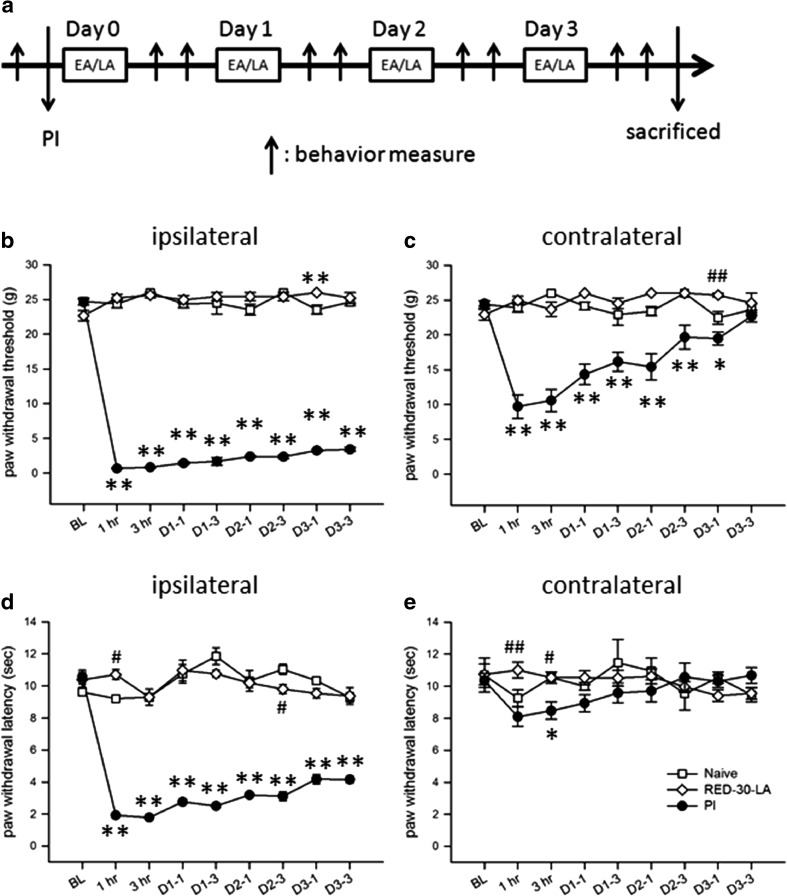Fig. 1.
PI-induced bilateral mechanical allodynia and ipsilateral heat hyperalgesia. a Diagram of the experiment protocol used in the study. b–e Nociceptive responses of the naive, PI, and RED-30-LA (i.e., normal rats who received 30-min of RED-LA) groups. b and c show mechanical withdrawal thresholds in the ipsilateral and contralateral hind paws, respectively, and d and e illustrate heat withdrawal thresholds in the ipsilateral and contralateral paws, respectively. Abbreviations and symbols: BL, baseline data; D or Day, post-PI day; D1-1, post-PI day 1, post-LA 1 h; EA, electroacupuncture; hr, post-LA hour; LA, laser acupuncture; PI, plantar incision. Upward arrows mean behavioral measure. *p < 0.05, **p < 0.01 for groups vs. naive group; #p < 0.05, ##p < 0.01 for groups vs. PI group through one-way ANOVA with Tukey’s post hoc test. No difference was found between the naive and RED-30-LA groups. N = 5 (naive), N = 6 (PI), and N = 5 (RED-30-LA)

